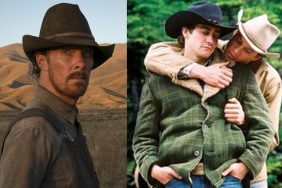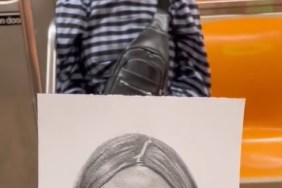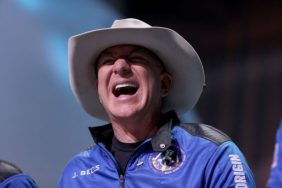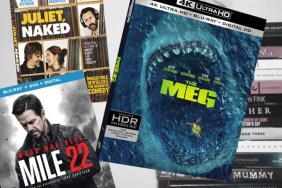Westerns are difficult to write. At their best, westerns are the closet thing America has to Greek tragedy. The action may be fast, the characters glorious, but the subtext is really about man’s existence in nature. Problem is, the ones that are good are brilliant, and the ones that suck, well, they really suck. Creating a western that incorporates fantasy and steampunk (a term I loathe) is an even harder recipe to execute.
So kudos and cheers to writer/artist Devon Purkiss, for his fantasy/steampunk/western titled The Cowboy and The Goliath. Purkiss opens up his story by doing a few things to avoid clichés. First, the Goliath, a mythical creature, appears out of nowhere. He just wanders into a western town, and he’s quiet and gentle. Okay, the kind monster isn’t a new idea, but Purkiss writes the character in an interesting way. I also like the fact that no explanation is given for him, something I know Purkiss can’t keep up forever, but is a nice change for an opening issue.
Second, the Cowboy is black. This is unique not only in the genre, but also because Purkiss doesn’t make it the central focus. This is about a gunslinger, the fact that he’s black seems incidental, at least in Book One. Even his affair with a white woman is common knowledge, and part of the story only to set up the characters, not as some incendiary plot device.
Third is the secretive element. Book One is setting up the characters, and it does so without giving too much away about them. By the story’s end, there is a real interest in the Cowboy, the Goliath, and the supporting characters, but what’s known is purely surface level. Who the Cowboy is, how he built his weird steampunk car, what the woman he’s involved with means by “possessed” – those are all still cloaked in darkness. Same with the Goliath. He’s quiet, lonely, and incredibly powerful, but how he came to be and how he ended up in a lonely one horse town remains a mystery.
With so much in the dark, what ties The Cowboy and the Goliath together is Purkiss’s dialogue and pacing. He allows the story to unfold as though you were experiencing it right alongside the characters. That’s not an easy thing to do. Crafting a story without allowing the readers to see ahead or know things the main characters don’t is risky, but Purkiss pulls it off. He also has an economy of words. There is not a lot of exposition between characters and, when they speak, it’s within the moment of the scene. It allows the reader to drink in all that’s going on.
Purkiss’s art is really wonderful. The issue is black and white, a style Purkiss obviously knows his way around, and it relies on heavy inks and what looks to be charcoal etchings for color. Like his economy for words, Purkiss has no problem using negative space within a panel. In much of the story, he sacrifices backgrounds to keep the dramatic tension on the characters. It’s very effective, especially when trying to figure out who is who.
The Cowboy and The Goliath is a crackerjack debut, and I expect big things from Devon Purkiss in the future.

(4 Story, 4 Art)






